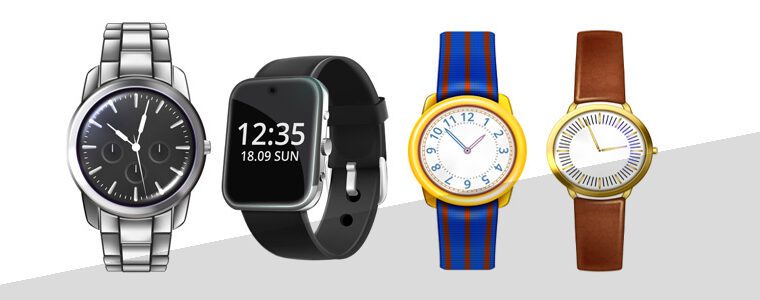
Exploring the Evolution of Wrist Watch Straps – A Journey Through Time
Introduction:
Wrist watch straps are an essential component of any timepiece. They not only serve a functional purpose of securing the watch to our wrists but also add a touch of style and personality to our outfits. Over the years, various types of wrist watch straps have emerged, each with its own unique history and characteristics. In this blog post, we will delve into the rich history of different types of wrist watch straps, tracing their origins and evolution.
1. Leather Straps: A Classic Choice
Leather straps have a long-standing tradition in watchmaking. Dating back to the early 19th century, these straps were initially made from animal hides and evolved to become an iconic choice for elegant timepieces. The durability, comfort, and natural beauty of leather contribute to their enduring popularity, making them a timeless option for both men and women.
2. Metal Bracelets: Effortless Sophistication
Metal bracelets became popular in the mid-20th century, primarily driven by Swiss watchmakers. Crafted from stainless steel, gold, or titanium, these straps offer a sleek and robust option for wrist watches. This type of strap provides a refined aesthetic, making it a preferred choice for formal and dress watches. Additionally, metal bracelets offer exceptional longevity and are highly resistant to daily wear and tear.
3. NATO Straps: From Military to Fashion
Originally designed for military use, NATO straps have gained significant traction in recent years as a fashion statement. Developed in the 1970s by the British Ministry of Defense, these nylon straps were created to withstand harsh conditions and specific military requirements. However, their versatility and vibrant colors have made them a popular choice for casual and sporty timepieces, appealing to both men and women.
4. Rubber Straps: Durability for the Adventurous
Rubber straps gained popularity during the 20th century with the rise of diving watches. Known for their high resistance to water, salt, and UV rays, these straps became the go-to choice for professional divers and watersport enthusiasts. The flexibility, resilience, and easy maintenance of rubber make it an ideal choice for individuals leading active lifestyles.
5. Milanese Mesh Straps: Timeless Elegance
Originating from Italy, Milanese mesh straps are renowned for their intricate weaving patterns that fit snugly around the wrist. Made from stainless steel, these straps exude a refined and luxurious feel, making them a popular choice for dress watches. The breathability and comfort offered by these straps enhance their appeal, making them a cherished accessory for watch enthusiasts seeking timeless elegance.
6. Textile and Fabric Straps: Comfort Meets Style
Textile and fabric straps offer a perfect blend of comfort and style. These straps, made from materials such as canvas, nylon, or textile blends, come in various patterns, colors, and textures, allowing watch wearers to express their individuality. These straps are lightweight, breathable, and ideal for casual or outdoor occasions, providing a comfortable option for everyday wear.
Conclusion:
Wrist watch straps have undergone a continuous evolution throughout history. From the classic appeal of leather straps to the ruggedness of rubber and the elegance of metal bracelets, each type offers its own advantages and adds a unique touch to a timepiece. Whether it’s a vintage piece or a modern creation, the choice of strap plays a crucial role in defining a watch’s style and functionality. Understanding the history and characteristics of various wrist watch straps empowers watch enthusiasts to make informed choices, ensuring that their timepieces truly reflect their personal style.



